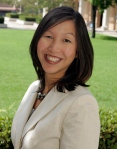
Among the more controversial Roman Catholic documents is Humanae Vitae, the 1968 encyclical of Pope Paul VI on birth control. This encyclical famously instructs against the use of artificial contraception methods in the regulation of birth. This position is based on the theological warrant that the natural law of God’s reproductive design requires human sexuality, if it is to be moral, to be always nuptial, companionable, and open to new life. The encyclical anticipates a number of reasons why people will object to this teaching, including: population problems, family and personal limitations, economic concerns, and so on. It also anticipates that some will suggest procreative and unitive ends must be seen diachronically in the context of the fullness of nuptial sexuality, such that sexuality would be understood holistically rather than as a series of individual sexual acts. Despite its acknowledgement of these concerns as legitimate, the encyclical argues that grave harm flows from the distortion of natural law and leads inevitably to the degradation of sexual dignity and nuptial integrity (for example, in making free sex more available to young people outside of marriage or cheapening male regard for women on account of women’s sexual objectification). The encyclical thus opts for an approach that evaluates sexual morality in terms of individual sexual acts.
The perspective of the document has been critically unpacked for decades, and its instruction is in the very least unconvincing to many Catholic couples. I find in my teaching that Catholic college students today are unfamiliar with the document’s language and rationale, even though they may know the basic instruction that Catholics aren’t supposed to use birth control. Since this issue is both topical currently due to the healthcare legislation and since birth regulation is a requisite discussion in my course on sexual ethics, I have the students read the encyclical itself. Now, this is a hard task because I know by and large what the student reactions will be. Their most favorable reaction is generally that the document has no instructional or binding value for them. Their least favorable reaction is that the document makes poor sense of the human situation today, especially because human sexual expression reaches well beyond the Church’s vision of normative, heterosexual, marital union. Continue reading “On the Transmission of Life by Natalie Weaver”
 As a Catholic, a feminist, and the grown-up version of my third grade self who dreamed of being a priest (and eventually Pope), I am simultaneously elated and deflated by the promise of Pope Francis. His bold criticisms of capitalism and inequality are breathtaking.
As a Catholic, a feminist, and the grown-up version of my third grade self who dreamed of being a priest (and eventually Pope), I am simultaneously elated and deflated by the promise of Pope Francis. His bold criticisms of capitalism and inequality are breathtaking. 






 The first question I always get asked when I’m in feminist spaces is: “What inspired you to become a feminist?” Although I could go into the various histories revolving around men’s involvement in the early stages of the women’s movement to the similarities between the LGBTQ and women’s movements, my simple answer has always relied on one person: my mother.
The first question I always get asked when I’m in feminist spaces is: “What inspired you to become a feminist?” Although I could go into the various histories revolving around men’s involvement in the early stages of the women’s movement to the similarities between the LGBTQ and women’s movements, my simple answer has always relied on one person: my mother.